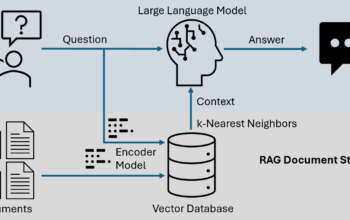AWS Healthcheck is a service provided by Amazon Web Services that helps businesses monitor and assess the health of their cloud infrastructure. It ensures that your cloud environment is running efficiently, securely, and in line with best practices. By identifying issues and potential weaknesses in your setup, AWS Healthcheck allows businesses to stay proactive and address concerns before they impact performance or cause downtime. It is essential for organizations leveraging AWS services to ensure that their infrastructure remains optimized and resilient.
Regular AWS Healthchecks help businesses gain insights into their AWS environment, identify performance bottlenecks, improve resource allocation, and minimize security risks. Whether you’re running a small business or a large enterprise, AWS Healthcheck is an invaluable tool for maintaining the overall health of your cloud environment.
The Role of AWS Healthcheck in Cloud Optimization
AWS Healthcheck plays a critical role in cloud optimization by providing a comprehensive evaluation of your AWS infrastructure. It helps you assess various components, from compute resources to networking configurations, ensuring everything is running smoothly. The goal is to maximize performance, reduce costs, and ensure optimal resource utilization.
One key aspect of AWS Healthcheck is its ability to identify underutilized resources. For example, it can highlight virtual machines or storage services that are over-provisioned and can be downsized, allowing businesses to save on costs without sacrificing performance. Additionally, AWS Healthcheck monitors the performance of services like Amazon EC2, S3, and RDS, ensuring they are functioning at their best.
By addressing any issues found during the healthcheck process, businesses can improve their overall cloud efficiency, leading to reduced operational costs and a more agile infrastructure that can adapt to changing needs.
Key Components of AWS Healthcheck
AWS Healthcheck evaluates several crucial components of your cloud environment to ensure everything is running optimally. Some of the main areas it covers include:
- Compute Resources (EC2 Instances): AWS Healthcheck reviews the usage of virtual machines (EC2 instances), ensuring they are appropriately sized for your needs and identifying underutilized or overprovisioned instances.
- Storage Resources (S3, EBS): It analyzes storage services like Amazon S3 and Elastic Block Store (EBS) to check for optimal performance and cost-effectiveness, suggesting improvements when necessary.
- Networking Configuration (VPC, Subnets): AWS Healthcheck checks the design of your Virtual Private Cloud (VPC), ensuring that network configurations are secure and optimized for performance.
- Database Performance (RDS, DynamoDB): It evaluates the performance and health of databases, ensuring they’re properly optimized and free from bottlenecks.
- Security Settings (IAM, Encryption): Security is a major part of AWS Healthcheck, assessing Identity and Access Management (IAM) settings and encryption protocols to ensure compliance with best practices.
By reviewing these areas, AWS Healthcheck helps businesses ensure that their cloud infrastructure remains high-performing, cost-efficient, and secure.
How AWS Healthcheck Improves Security and Compliance
Security and compliance are critical considerations for businesses using cloud services. AWS Healthcheck plays an essential role in enhancing security by providing a thorough review of your cloud environment’s security posture. It evaluates various aspects of your infrastructure, including encryption settings, access controls, and network configurations.
AWS Healthcheck can identify potential vulnerabilities, such as unencrypted data storage or overly permissive IAM policies, and recommend corrective actions to mitigate risks. It also ensures compliance with industry standards and regulations such as GDPR, HIPAA, and PCI-DSS by reviewing your environment against relevant compliance frameworks.
Furthermore, AWS Healthcheck helps businesses implement security best practices, such as enforcing the principle of least privilege, using multi-factor authentication, and regularly auditing access logs. These actions help reduce the risk of data breaches and unauthorized access, ensuring your AWS environment is secure and compliant.
Benefits of Regular AWS Healthcheck Assessments
Performing regular AWS Healthcheck assessments is essential for maintaining the long-term health of your cloud infrastructure. Some key benefits of regular healthchecks include:
- Early Problem Detection: AWS Healthcheck identifies potential issues before they escalate into major problems, allowing businesses to take action proactively.
- Cost Optimization: By identifying underutilized resources, AWS Healthcheck helps businesses optimize their spending and avoid unnecessary costs.
- Performance Improvement: Regular health checks ensure that your cloud environment remains optimized for performance, providing faster response times and better user experiences.
- Security and Compliance Assurance: Regular assessments help businesses maintain security and compliance by ensuring best practices are followed and vulnerabilities are addressed promptly.
- Peace of Mind: Regular AWS Healthchecks provide business owners and IT teams with peace of mind, knowing their cloud infrastructure is being actively monitored and optimized.
By scheduling routine healthchecks, businesses can avoid unexpected downtimes and ensure their cloud environment is always ready to meet their needs.
How to Get Started with AWS Healthcheck
Getting started with AWS Healthcheck is simple. Here are the key steps businesses can follow to begin using AWS Healthcheck:
- Set Up Your AWS Account: First, make sure your business has an active AWS account and the necessary permissions to run a healthcheck.
- Use AWS Trusted Advisor: AWS Trusted Advisor is a tool that provides real-time guidance to help you optimize your AWS infrastructure. It offers best practices and actionable recommendations across five categories: cost optimization, performance, security, fault tolerance, and service limits.
- Run the Healthcheck: Once AWS Trusted Advisor is set up, you can run a healthcheck to evaluate your cloud resources and receive personalized recommendations.
- Address Recommendations: AWS provides detailed reports with specific recommendations to improve your cloud environment. Take action on these suggestions to address any issues.
- Schedule Regular Healthchecks: Set up recurring health checks to ensure your cloud infrastructure stays optimized and secure.
By following these steps, businesses can easily get started with AWS Healthcheck and ensure their cloud environment remains in top shape.
Conclusion
AWS Healthcheck is a vital tool for businesses looking to optimize, secure, and streamline their AWS cloud infrastructure. By regularly assessing your cloud resources and implementing recommended changes, businesses can reduce costs, enhance performance, and maintain a secure environment. Whether you’re just starting with AWS or have been using the platform for years, AWS Healthcheck is an essential service that helps ensure your cloud infrastructure is always performing at its best.




